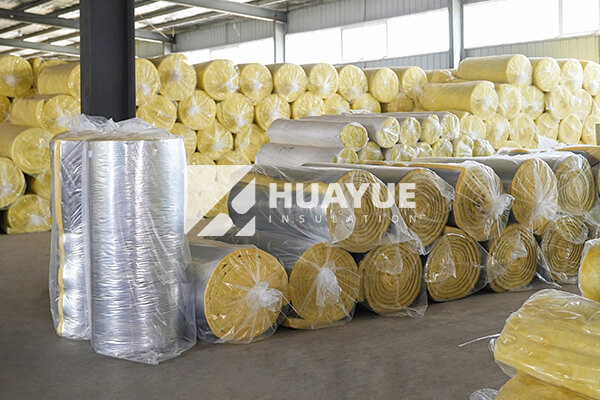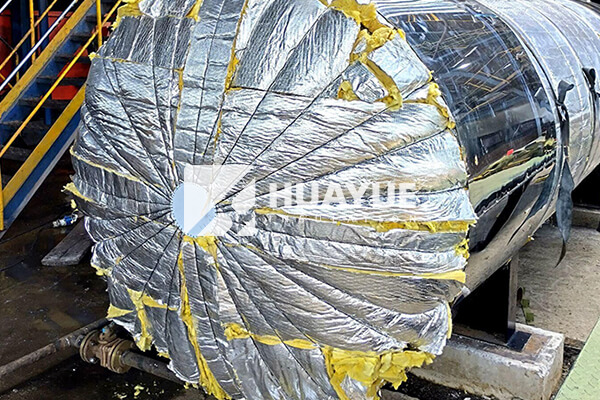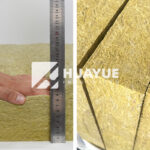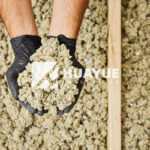Is Foil Faced Fiberglass Insulation Suitable for Industrial Applications?
Foil-faced fiberglass insulation is getting a lot of attention in industrial circles. Many plant engineers wonder if it really delivers what it promises.
Foil-faced fiberglass insulation offers enhanced thermal performance, excellent moisture control, and improved fire resistance for industrial tanks and piping. The foil facing reflects radiant heat, making it suitable for high-demand environments and areas where energy efficiency is a top priority.

Cost and energy savings motivate many of us to rethink old insulation solutions. In my experience with plant upgrades, I noticed more clients asking about foil-faced materials and how they impact long-term tank performance. Let’s break down what makes foil-faced fiberglass special, where it works best, and if it measures up to expectations.
Is Foil-Faced Insulation Any Good?
Many engineers want an insulation wrap that solves multiple problems at once: heat loss, moisture, safety, long life. Does foil-faced fiberglass achieve this?
Foil-faced insulation is a good choice for areas that need strong thermal insulation, better moisture protection, and higher fire safety. It performs well in places exposed to temperature swings or where energy loss means higher costs.

I once oversaw a storage tank retrofit where we switched to foil-faced fiberglass panels. The real upside was in how the foil facing acted as a radiant barrier. It bounced heat back and stopped warm air from escaping too fast, which cut our heating bills. The foil also helped keep vapor from reaching the fiberglass, so the insulation stayed dry and kept its R-value.
To see how foil-faced fiberglass stands out, let’s break down its characteristics in a simple table:
| Feature | Foil-Faced Fiberglass | Plain Fiberglass | Polyurethane Board | Mineral Wool |
|---|---|---|---|---|
| Thermal Performance | High | High | Very High | High |
| Moisture Resistance | Excellent | Average | Good | Average |
| Fire Resistance | Very Good | Good | Moderate | Excellent |
| Ease of Installation | Easy | Easy | Average | Average |
| Cost | Moderate | Low | High | Moderate |
In almost any area exposed to exterior weather or in contact with moist air, foil-faced fiberglass performs better than standard materials. It saves on energy, meets fire codes, and extends the life of tanks and pipes. When the project budget is not the only concern, I always consider its extra benefits.
What Are the Disadvantages of Foil Insulation?
Every product has limitations. What drawbacks come with foil-faced insulation?
Foil insulation can trap moisture if installed incorrectly, damage easily, and sometimes interferes with vapor drive if not positioned the right way. It also costs more than plain alternatives and may need extra labor to fit around valves or irregular surfaces.

During one plant maintenance window, we found some foil-faced panels had trapped condensation behind them. That moisture was caused by incorrect installation; the foil acted like a vapor barrier on both sides, so no moisture could escape. It reminded us that proper installation is key. Damaged foil also leads to reduced performance. Sharp objects or heavy equipment can easily puncture the foil during transport or installation, requiring quick patch jobs.
Here’s a summary of the main disadvantages:
- Higher material and labor price than standard fiberglass
- Susceptibility to damage during transport and installation
- Requires attention to vapor drive direction (wrong side facing can create condensation)
- Harder to adapt to complex shapes or fittings
- May need extra adhesives, tapes, or sealants to keep joints secure
For Hans Müller and other plant engineers, understanding both the strength and the weak spots of foil-faced fiberglass insulation is important when planning a full system. When the drawbacks are managed, the performance can be very impressive, but it is not entirely “set and forget.”
Which Way Should Foil-Faced Insulation Face?
How you install foil-faced insulation makes or breaks its performance. Which side should the foil face?
For most tanks and pipes, the foil side of the insulation must always face the warmer side that you want to keep the heat in or out of. This reflects radiant energy in the right direction and prevents condensation.
When I was new to specifying insulation, I saw some contractors put the foil on the wrong side, thinking it did not matter. The result was less energy savings and often, surprise moisture issues. With foil-faced fiberglass, the foil works like a mirror, bouncing heat back. For hot tanks, foil should face in toward the tank; for cold tanks, it should face out.
This simple table helps clarify:
| System Type | Foil Facing Direction | Purpose |
|---|---|---|
| Hot Tank | Inward (toward tank) | Reflects heat back to tank |
| Cold Tank | Outward (away from tank) | Reflects outside heat, blocks vapor |
| Pipe Insulation | Per code/spec | Typically follows tank guidance |
It is always critical to follow the system designer’s guidance. Sometimes, for safety or special weather protection, you want an extra foil layer outside as a jacket. But as a general rule, the foil faces the space with the greatest radiant heat you want to control.
Is Foil Board Insulation Any Good?
Many hear about foil board insulation as a substitute for fiberglass batts or rolls. Is this a practical choice?
Foil board insulation has high R-value, good moisture control, and is easy to install in flat or modular panels. It works well for tank bases, walls, or large-diameter pipe covers but is not as flexible for curved or irregular surfaces.
Foil-faced boards work best on big, flat surfaces like tank roofs, pump house panels, or control room walls. They hold their shape and do not slump over time like some batts or loose fill. When we built a new chemical tank farm, we used foil-faced glass wool boards to insulate the tank bases. They kept out heat and water, making the tanks safer and less prone to corrosion.
Here is a comparison between foil board and standard fiberglass batts:
| Feature | Foil Board | Fiberglass Batts |
|---|---|---|
| Shape Retention | Excellent | Moderate |
| R-Value (per inch) | High | High |
| Conformability | Limited (flat only) | Good (irregular shapes) |
| Installation Speed | Fast (panels) | Fast (rolls/bagged) |
| Typical Use | Walls, roofs, tank bases | Pipes, tanks, irregular areas |
When you need flat, robust insulation with a tough surface that is easy to seal or paint, foil board delivers. For curved or complex shapes, regular foil-faced fiberglass is the way to go.
Conclusion
Foil-faced fiberglass insulation suits high-demand settings. It controls heat, blocks moisture, and improves safety, but needs careful installation and right facing for best performance.
You may also be interested in:
Ready to Get Started?
Get in touch with our experts for personalized solutions tailored to your needs.
Get Free QuoteLatest Articles


What Does Density Mean for Rock Wool Insulation?
Nov 25, 2025

Does mold grow on fiberglass insulation?
Nov 25, 2025
Let's Work Together
Ready to take your business to the next level? Get in touch with our team of experts and let's discuss how we can help you achieve your goals.
Get Free Solutions




